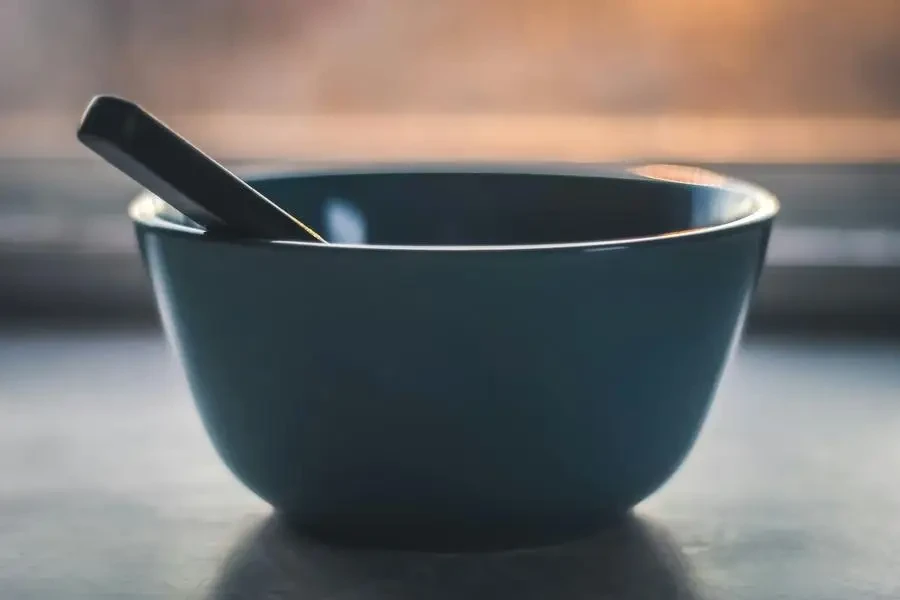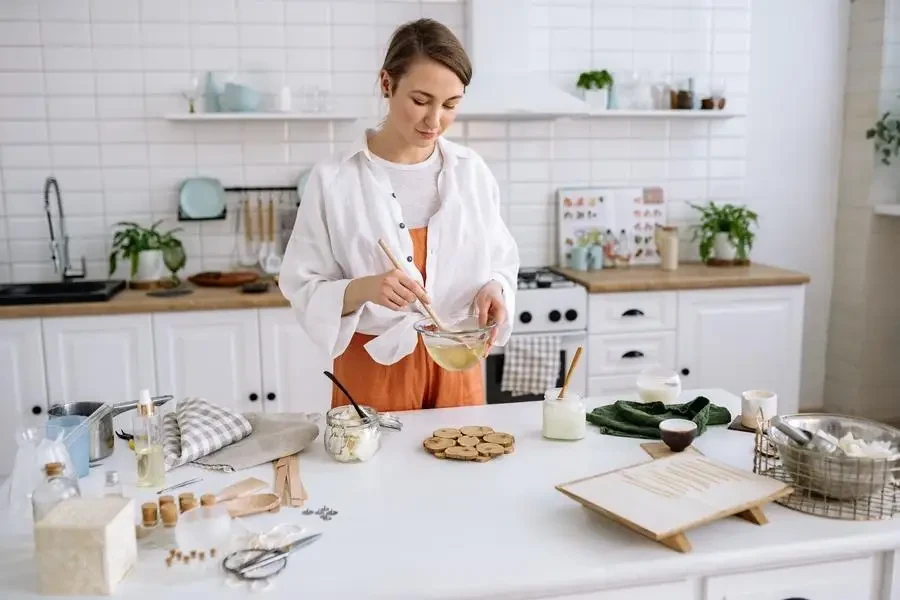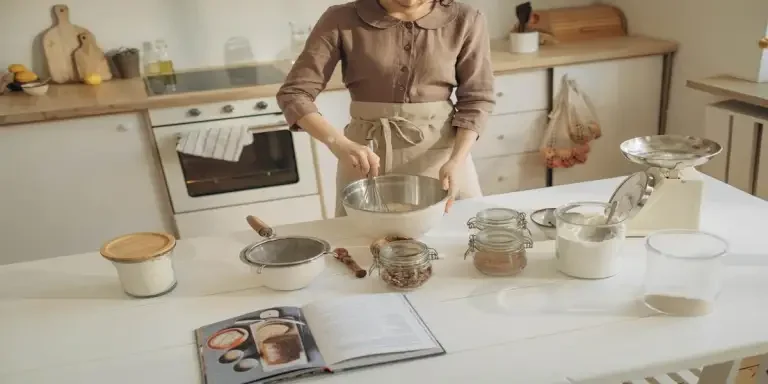Mixing bowls are indispensable in every kitchen, serving various purposes, from cooking to serving. The global market for mixing bowls shows a promising trajectory, fueled by the rising demand for convenience, durability, and visual appeal.
Yet, in this competitive landscape, entrepreneurs must stay abreast of evolving trends and sourcing strategies to thrive. This article delves into the dynamic market forces shaping the mixing bowl industry. It explores diverse materials and offers expert guidance on identifying top-notch suppliers and products.
Table of Contents
Current state of the mixing bowls market
Trends in the mixing bowls market
Sourcing tips for mixing bowls
Choosing the right mixing bowl material
In summary: Mixing bowls market trends and sourcing essentials
Current state of the mixing bowls market
The global mixing bowl market reached US$ 9.2 billion in 2023. According to Cognitive Market Research, the mixing bowl market is expected to grow, with a 6.0% compound annual growth rate (CAGR) from 2023 to 2030. Plastic mixing bowls are particularly sought after for easy cleaning and durability. Technological advancements like non-slip bases and ergonomic designs are further boosting sales.

While Asia-Pacific leads the market, North America is seeing rapid growth, as well. According to the report, big names like Cuisinart and Vollrath are expanding their presence through strategic mergers and innovative product launches. However, with evolving consumer tastes, the market’s dynamic landscape presents challenges and opportunities for industry players.
Factors influencing the mixing bowls market
Rapid urbanization: The growth of cities and the urban lifestyle have increased the demand for kitchenware, including mixing bowls.
Popularity of kitchenware: The rise in popularity of cooking and baking, spurred by cooking shows and online platforms, has increased demand for kitchenware like mixing bowls.
E-commerce: The growth of online global marketplaces has made various mixing bowls easily accessible to entrepreneurs wanting to source products from suppliers.
Trends in the mixing bowls market
More people want multifunctional mixing bowls
Buyers seek bowls that do more than mix. They want them for baking, cooking, serving, and even storing. Mixing bowls with lids, spouts, handles, and measurement markings are rising. They grab buyers who want a bowl to do more in less kitchen space.
Eco-friendly mixing bowls are getting popular

People care about Earth! They pick bowls made of recycled, natural, or decomposing materials. Wood, glass, ceramic, and stainless steel mixing bowls are favorites among them.
Custom and sparkling mixing bowls are in demand
Colorful, unique, and custom mixing bowls are on the rise. It’s not just about function, but style! Customers like vibrant shades, patterns, and designs.
Online platforms are influencing bowl buying
Online shopping platforms give buyers lots of choices for bowls – different brands, prices, and qualities. Users weigh options and pick their best fit. Social media also plays a big role in shopping decisions. With just a click, consumers can see pictures, read reviews, check star ratings, and get tips from other shoppers. This is changing how people shop, making it easier and more interactive.
Sourcing tips for mixing bowls
Research and understand consumer preferences
Understanding your target market’s desires and requirements is crucial. You can conduct surveys, interviews, focus groups, or online research to gather feedback and insights from potential buyers. You can also analyze your competitors and industry leaders’ trends and best practices.
Establish partnerships with reliable suppliers
Once you know which mixing bowls you want, it’s important to find good suppliers. You can look for them on websites, at trade shows, or through recommendations. You can also reach out to them directly and ask for samples, prices, catalogs, and more.
Consider quality control measures and certifications
Check the manufacturer’s quality control and certifications to ensure the mixing bowls you get are top-notch and meet safety standards. Look for certificates showing the product’s origin, compliance, inspection, testing, or analysis. You can even visit the factories or hire inspectors to double-check everything.
Evaluate logistical considerations for sourcing
Think about how it all gets to you. This includes transportation, packaging, where you store your inventory, and dealing with taxes and insurance. You can check out different ways to ship your products, different companies that ship, the routes they take, and how much it costs. This helps you find the best choice for your business, saving you time and money.
Negotiate pricing and terms effectively
The last step is negotiating the best price and terms with the manufacturers or suppliers. Having a clear idea of your budget and what you can afford is essential. You can negotiate by telling the supplier about your research, how many orders you want to make, how you’ll pay, and when you need the bowls. You can also ask for discounts, bonuses, warranties, or guarantees to help your business.
Choosing the right mixing bowl material
The mixing bowl material affects their durability, versatility, and aesthetics. Here’s a breakdown of the most common materials:
1. Ceramic
Pros: They look lovely, are strong, and can go in the microwave and oven.
Cons: They can easily chip, crack, or break.
2. Plastic
Pros: Affordable, light, and won’t break easily.
Cons: Can melt, stain, or take on smells.
3. Wood/natural materials
Pros: Warm, natural look and feel, ideal for making salads.
Cons: They might not offer a smooth surface for kneading dough.
4. Silicone
Pros: Silicone mixing bowls are resistant to temperature changes, nonstick, collapsible, easy to clean, and dishwasher-safe.
Cons: Some dislike the texture and can hold onto smells.
5. Copper
Pros: Perfect for whisking egg whites because of its reaction with copper ions.
Cons: Costly.
6. Metal
Pros: they are inexpensive, durable, versatile, and lightweight.
Cons: They can get hot when holding hot liquids and may react with acidic ingredients.
7. Glass
Pros: Glass mixing bowls don’t react with food, can go in the microwave, and some can handle ovens and freezers.
Cons: They might break easily and don’t like sudden temperature changes.

Choosing the perfect mixing bowls means thinking about what your customers like to cook, what they prefer, and how much they want to spend. Whether they wish for bowls that last long, or look good, there’s a bowl material that fits their needs.
In summary: Mixing bowls market trends and sourcing essentials
The global mixing bowl market is looking bright. Plastic bowls are leading the pack because they’re cheap and long-lasting. But people are starting to want bowls that can do more, are kind to the environment, and look good.
To succeed in this changing market, business owners must keep an eye on what customers want, team up with trustworthy suppliers from Alibaba.com, and make sure the bowls they get are top-notch.





 Afrikaans
Afrikaans አማርኛ
አማርኛ العربية
العربية বাংলা
বাংলা Nederlands
Nederlands English
English Français
Français Deutsch
Deutsch हिन्दी
हिन्दी Bahasa Indonesia
Bahasa Indonesia Italiano
Italiano 日本語
日本語 한국어
한국어 Bahasa Melayu
Bahasa Melayu മലയാളം
മലയാളം پښتو
پښتو فارسی
فارسی Polski
Polski Português
Português Русский
Русский Español
Español Kiswahili
Kiswahili ไทย
ไทย Türkçe
Türkçe اردو
اردو Tiếng Việt
Tiếng Việt isiXhosa
isiXhosa Zulu
Zulu